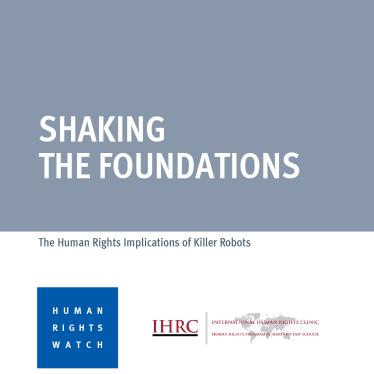(Washington, DC) - The current review of United States policy on antipersonnel landmines should result in a decision to join the historic treaty banning the weapon, Human Rights Watch said today. Today is the 11th anniversary of the date the 1997 Mine Ban Treaty became binding international law.
"The last eleven years have shown that the Mine Ban Treaty is working," said Steve Goose, director of the Arms Division at Human Rights Watch. "Deadly antipersonnel mines are no longer viewed as a legitimate weapon of war, and it is time for the US to recognize that reality with a decision to sign on to the treaty."
A total of 156 nations are party to the Mine Ban Treaty, and another two have signed, but not yet ratified. China, Russia, and the United States are among the 37 states that have not joined. But nearly all of those states are in de facto compliance with most of the treaty's provisions. Every NATO member has foresworn the use of antipersonnel mines except for the US, as have other key allies, such as Afghanistan, Iraq, Australia, and Japan. In the Western Hemisphere, only the US and Cuba have not joined the treaty.
"We're encouraged that the Obama administration has initiated a policy review and expect it will conclude that the US should join the Mine Ban Treaty," Goose said. "The humanitarian and political benefits would be huge, and it would not tie the hands of the US military. Some ask how the US can join when it is at war in Afghanistan and Iraq, but both those nations are members of the treaty and are already obliged to reject any use of antipersonnel mines."
On December 1, 2009, a US official confirmed that the US has begun a comprehensive landmine policy review "initiated at the direction of President Obama." The Clinton administration in 1998 set the objective of joining the Mine Ban Treaty in 2006, but the Bush administration reversed course in February 2004 and announced that it did not ever intend to join.
The international community has banned antipersonnel mines because they are inherently indiscriminate weapons that have killed and injured far more civilians than soldiers. They have taken a horrific human and socio-economic toll for decades.
The United States has not used antipersonnel mines since 1991 (in the first Gulf War), has not exported them since 1992, has not produced them since 1997, and is the biggest donor to mine clearance programs around the world. However, it still has stockpiles of more than 10.4 million antipersonnel mines for potential future use.
The Mine Ban Treaty entered into force on March 1, 1999, just 15 months after it was negotiated - the shortest time ever for a modern international treaty. The treaty comprehensively bans all antipersonnel mines, requires destruction of stockpiled mines within four years, requires destruction of mines already in the ground within 10 years, and urges extensive programs to assist the victims of landmines.
Since the treaty came into force, the use of antipersonnel mines has largely dried up. In recent years, only the pariah government of Burma and a few rebel groups have laid significant numbers of mines. Trade in these weapons has virtually stopped. Only about a dozen of the more than 50 countries that have manufactured antipersonnel mines still retain the capacity.
Some 44 million antipersonnel mines have been destroyed from stockpiles. Large tracts of land have been cleared of these mines and returned to productive use. The number of civilians killed and wounded by mines each year has fallen dramatically.
Human Rights Watch is a founding member of the International Campaign to Ban Landmines (ICBL), 1997 Nobel Peace Prize laureate.






